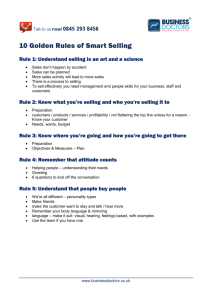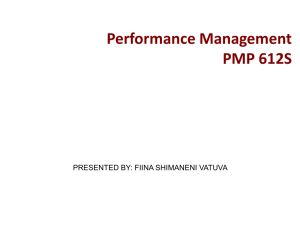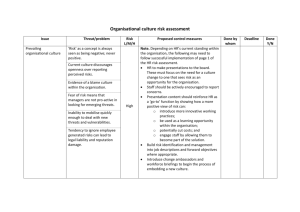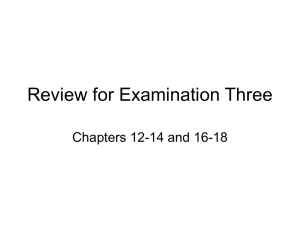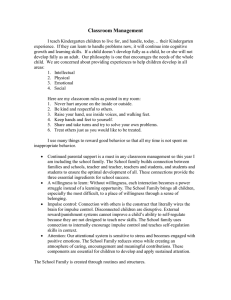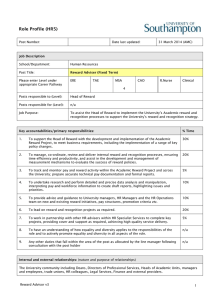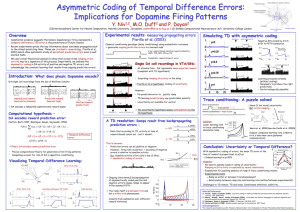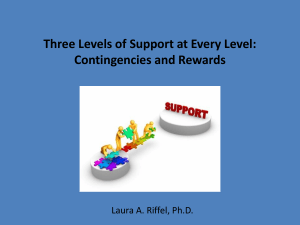Behavior Management
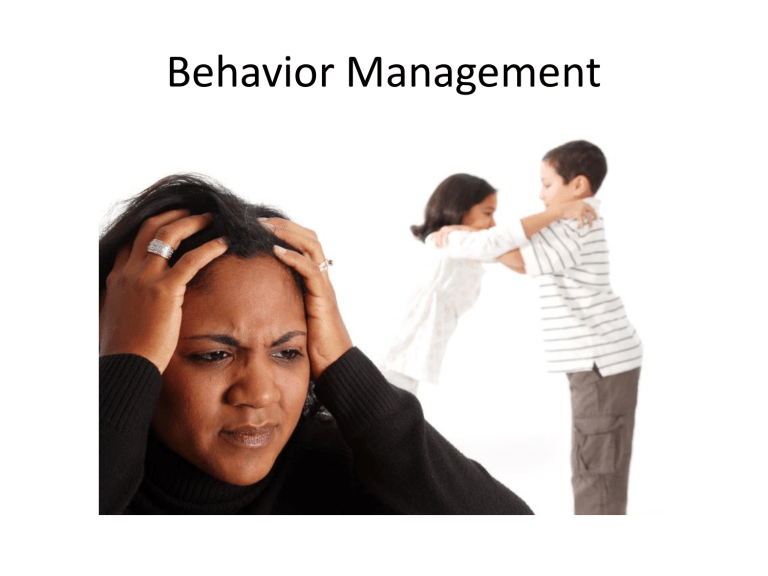
Behavior Management
• Learning Theory
• Behavior Modification
• Behavior Management
Human Behavior
Human Relationships
Parent Child
• Predictability
• Readability
• Responsiveness
Feedback Loop
• Feelings of efficacy
Competent System
Feelings of helplessness
Helpless System
Parenting Styles
• Authoritative
• Indulgent
• Authoritarian
• Neglectful/Abusive
Authoritative
• Parental warmth
• Inductive discipline
• Non-physical and mild punishments
• Consistency in child rearing
Indulgent
• Overly permissive
• Difficulty setting limits
• Reversed family hierarchy/Boundary problems
Authoritarian
• Limited warmth
• Harsh physical punishment/Unreasonable punishment
• One-sided discipline
Neglectful and Abusive
• Disrespectful of child’s basic needs
• Physically aggressive in discipline
• Disregard for child’s welfare
• Limited involvement in child’s life
Limit Setting
• Predictability
• Readability
• Responsiveness
Giving Commands Assertively
– 1. Move close to child.
– 2. Stern facial expression.
– 3. Say his or her name.
– 4. Get and maintain eye-contact.
– 5. Firm tone of voice.
– 6. Give a direct, simple and clear command.
– 7. State a consequence for disobedience.
– 8. Back it up.
Six Basic Rules for Effective
Management
• 1. Set clear rules and post in visible location
• 2. Reward good behavior
• 3. Don’t accidentally reward bad behavior
• 4. Punish by using mild consequences
• 5. Expect behavioral bursts
• 6. Effective communication between parents
Active ignoring
• 1. Briefly remove all attention from child.
• 2. Refuse to argue, scold or talk.
• 3. Turn head and avoid eye contact.
• 4. Do not show anger in manner, gestures, or speech.
• 5. Act absorbed in another activity or leave room.
• 6. Be aware of accidental reinforcement.
• 7. Give child lots of attention when behavior stops.
Negative Control Techniques
• Advantages of time out
– 1. Quickly weakens many bad behaviors and stops some behaviors completely.
– 2. Easy for parents
– 3. Less emotional side effects for parents.
– 4. Parents modeling rational and non-aggressive behaviors
– 5. Parent-child relationships returns to normal after the time out.
Steps for Time Out
• 1. Select target behavior
• 2. Count how often this behavior occurs
• 3. Pick out a boring place for time out
• 4. Explain time out to child
• 5. Wait for the target behavior to occur
• 6. Place child in time out using no more than 10 words and
10 seconds.
• 7. Get a portable timer and set it to ring in __ minutes, placed within hearing distance
• 8. Wait for the timer to ring, remove all attention from child while he is in time out
• 9. Ask child why he was sent to time out before release.
Natural Consequences
• These are controlled by nature and happenstance,
– Playing rough with the cat leads to being scratched or bitten.
– Breaking a toy leads to its loss (don’t replace it).
– Not wearing jacket leads to being cold.
Logical Consequences
• These are controlled by parent:
– Riding bike in street leads to loss of bike for 1 week.
– Refusal to brush teeth leads to no candy, soft drinks, or desserts.
Response Cost
• Loss of everyday privileges following misbehavior or noncompliance
• Every day is a fresh start
• No warnings
• Consequences from least to most severe
• Easy and cheap
Positive Control Strategies
• Grandma’s Rule
• Positive Practice
• Reward Alternative Behavior
• Reward Other Child (Modeling)
Points Tokens and Contracts
• Steps
– 1. Select target behavior(s)
– 2. Make a point-reward calendar
– 3. Write a menu of rewards
– 4. Keep track of points earned and spent
– 5. Adjust the reward program
– 6. Phase out the program
Obstacles to Effective Behavior
Management
• 1. Co-existing Conditions
• 2. The wrong person is upset
• 3. Not staying with the strategy long enough
• 4. Staying with the strategy too long
• 5. Human tendency to focus on the negative
• 6. Assuming saliency of consequence
• 7. Parental emotional reactivity
Children and Media
Screen Media Concerns
• Each hour of TV watched by preschoolers increases by 10% the likelihood of ADHD by age 7
• AAP recommends NO screen media for children less than 2 years old. For older children up to 2 hours daily of educational and non-violent material


